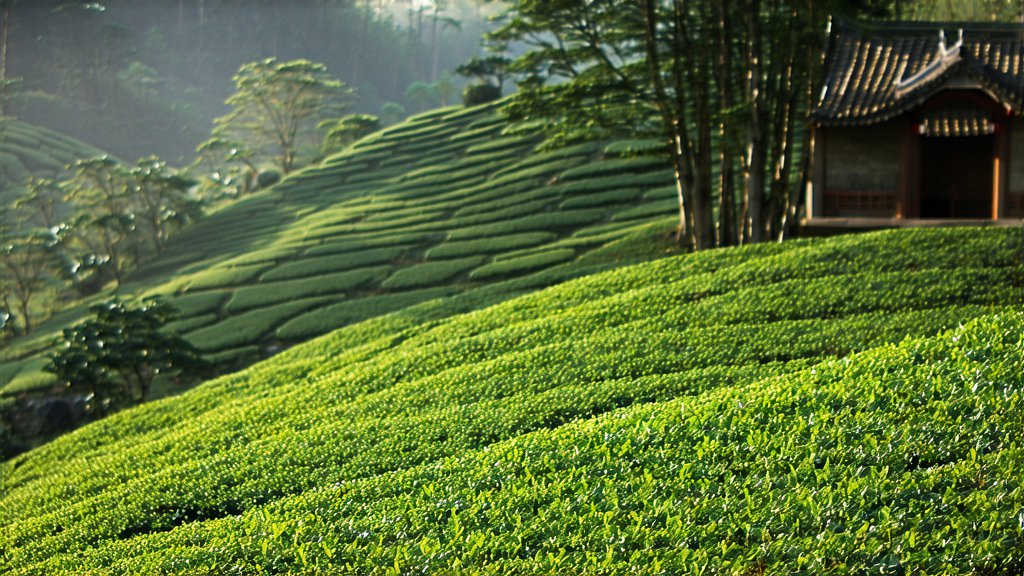
In the vast and diverse landscape of Chinese tea culture, one variety stands out for its rich history, distinctive flavor profile, and unique production methods – Keemun Black Tea. Originating from the lush mountains of Qimen County in Anhui Province, this tea has captivated palates around the world for centuries, earning it the nickname "The Golden Elixir of the East." This article delves deep into the fascinating world of Keemun Black Tea, exploring its historical roots, varieties, intricate manufacturing process, and the art of its appreciation through tea ceremonies.
A Glimpse into History
Keemun Black Tea traces its origins back to the Tang Dynasty (618-907 AD), making it one of the oldest known teas in China. Its name is derived from the Qimen region, where it was first cultivated. Over time, it gained immense popularity not just within China but also internationally, particularly during the Ming Dynasty when it became a favored beverage among European royalty. The tea's journey to Europe was facilitated by Portuguese traders in the 16th century, marking the beginning of its global influence.
Varieties of Keemun Black Tea
Keemun Black Tea comes in several distinct varieties, each with its own unique characteristics:
-
Keemun Hao Ya (Qimen Mao Feng): This is the highest grade of Keemun tea, known for its delicate leaves and tippy appearance. It offers a complex flavor profile with notes of orchid, honey, and a hint of smokiness.
-
Keemun Xian Hao (Qimen First Pick): Harvested early in the season, these leaves are smaller and more tender, resulting in a lighter, more aromatic brew compared to later picks.
-
Keemun Gong Fu (Qimen Kung Fu): This variety undergoes a more labor-intensive processing method, including additional rolling and oxidation steps, which impart a fuller body and deeper flavor to the tea.
-
Keemun Hong Zhen (Qimen Red Dust): Made from crushed tea leaves, this type is often used for blending purposes or in tea bags due to its strong flavor and affordability.
The Art of Keemun Black Tea Production
The production of Keemun Black Tea is an art form that involves multiple stages, each contributing to the tea's final character:
-
Plucking: Only the youngest shoots and leaves are handpicked, usually in early spring. This ensures the freshest and most tender parts of the plant are used.
-
Withering: The freshly picked leaves are spread out thinly on bamboo mats under direct sunlight or in a well-ventilated room to reduce moisture content gradually.
-
Rolling: The withered leaves are then rolled using traditional methods or modern machinery to break down cell walls, allowing enzymes to interact with oxygen during the next stage.
-
Oxidation: Unlike green teas, black teas undergo a controlled oxidation process. For Keemun, this typically lasts between 2-3 hours, giving the leaves their characteristic dark color and robust flavor.
-
Drying: Finally, the oxidized leaves are dried in large woks or ovens to halt further oxidation and reduce moisture levels to about 3-5%.
Appreciating Keemun Black Tea: The Tea Ceremony
To truly appreciate Keemun Black Tea, one must engage in a traditional Chinese tea ceremony, which emphasizes mindfulness, respect for nature, and the art of preparation. Here's a step-by-step guide:
-
Warm the Teapot and Cups: Begin by rinsing your teapot and cups with hot water to ensure they are clean and to maintain the tea's temperature.
-
Measure the Tea Leaves: Use approximately 2 grams of loose leaf tea per cup of ideally using a scale for precision.
-
Boil Water: Heat water to around 90-95°C (194-203°F). Using spring water or filtered water is recommended for best results.
-
Steeping: Place the tea leaves into the warmed pot and pour in the hot water gently. Let it steep for 3-5 minutes, adjusting based on personal preference for strength.
-
Pouring and Savoring: As you pour the tea from the pot into cups, do so in a circular motion to distribute flavors evenly. Sip slowly, savoring the nuances of aroma, taste, and aftertaste.
-
Multiple Infusions: Keemun Black Tea can be re-steeped several times, with each infusion revealing new layers of flavor.
Conclusion
Keemun Black Tea represents not just a beverage but a cultural heritage deeply rooted in Chinese history and traditions. Its production is a testament to the skill and dedication of tea farmers and artisans who have passed down their knowledge through generations. Whether enjoyed as part of a formal tea ceremony or simply savored quietly, Keemun offers a window into the soul of China's rich tea culture. For those seeking an authentic experience, embarking on a journey to taste Keemun Black Tea firsthand is an adventure worth taking.